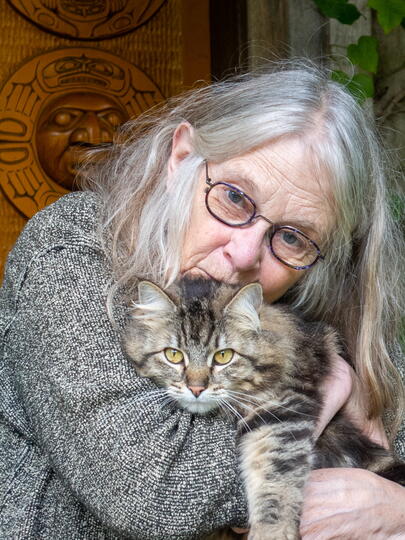UBCO researchers go green looking for anti-cancer compounds
A chemist examines sustainable drug production using plant by-products.
It may come as a surprise to some, but many of the compounds used in modern-day medicine, including chemotherapeutic drugs, come from plants.
The tropical tree Camptotheca acuminata, known as “happy tree” in its native habitats in southern China and Tibet, produces a group of chemicals called camptothecinoids. These compounds are among the leading chemotherapeutic agents used to treat certain types of cancer.
Just two compounds derived from these camptothecinoids — irinotecan, used to treat both colorectal and small cell lung cancer, and topotecan, used to treat ovarian cancer — make up a multibillion-dollar global industry.
The parent chemical of these drugs in the happy tree, camptothecin, is a powerful cancer-killing agent itself. However, it has adversarial side effects and poor solubility.
Dr. Thu-Thuy Dang, Assistant Professor of Chemistry in the Irving K. Barber Faculty of Science, and her research team in UBCO’s Plant Bioactive Compound Research Laboratory, have discovered a group of enzymes from the tree that oxidize camptothecin, enabling the production of topotecan, irinotecan, and other similar compounds.
“The conversion of camptothecin to its hydroxycamptothecin derivative is a one-step reaction that looks simple on paper but is very challenging to do with chemical synthesis due to the compound’s complex structure,” Dr. Dang says. “Finding and manipulating the genes responsible for making it in the tree is how we solve this problem.”
The issue, as Dr. Dang explains, is that labour-intensive and unsustainable processes are needed to turn camptothecin into more clinically useful drugs. Camptothecin needs to be extracted from the plant, then converted in multi-step chemical reactions, first to its oxidated derivative, and then to drugs such as topotecan and irinotecan. Its chemical synthesis from camptothecin requires harsh reaction conditions with limited yields.
Alternatively, the derivatives can be harvested from the plant, but this approach is destructive and endangers the future supply of camptothecin-derived drugs. The challenge was finding the right genes in the plant genome, which contains tens of thousands of genes.
“It was truly like trying to find a needle in a haystack,” she says. “But thanks to state-of-the-art bioinformatic approaches and biochemical intuition, we came up with a manageable shortlist of gene candidates.”
While the process of screening was painstaking, the team eventually found two genes encoding for two enzymes that convert toxic camptothecin into the derivative and its close analogue. The genes were then moved to common baker’s yeast, where fermentation produced a milligram-level abundance of the hydroxycamptothecins for the semisynthesis of clinically important anti-cancer drugs.
“These new enzymes allowed the transformation of plant-derived camptothecin in one simple step to a chemical that we could readily convert into more soluble and structurally diverse anti-cancer drugs,” says Anh Nguyen, a recently graduated master’s student and study co-author.
In addition, because the team is now dealing with enzymes, their reactions can happen at room temperature in mild conditions, as opposed to the harsh conditions required for chemical synthesis.
This discovery is particularly significant because it drastically reduces the amount of time and effort spent on anti-cancer compound derivatization and semisynthesis. It also highlights plants as reservoirs of natural and potentially malleable biocatalysts for sustainable chemical production.
“This enzyme technology presents a unique opportunity for us to expand the camptothecinoids’ chemical space, and make more effective and accessible anti-cancer drugs with a new, more efficient manufacturing method,” co-author Dr. T. Don Nguyen says. “Thanks to these enzymes, we now have access to a suite of chemicals that were never before available in nature or even laboratories.”
Dr. Dang is now looking at how the plant makes camptothecin. Her ultimate goal is to put together the complete camptothecin pathway in a microbial system such as engineered baker’s yeast, thereby making anti-cancer drugs more accessible.
UBC has filed an international patent on Dr. Dang’s use of the new enzymes to diversify camptothecinoids, a move she says will open the door to additional opportunities.
“Cancer is the leading cause of death in Canada, and having an opportunity to work towards a future with more available treatments and, ultimately, survivors is a responsibility we take very seriously.”
This research was recently published in Communications Chemistry.

































